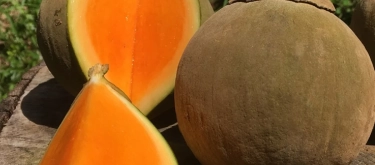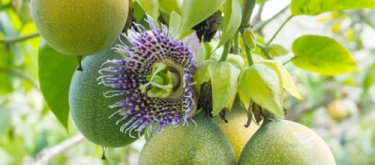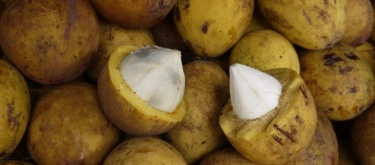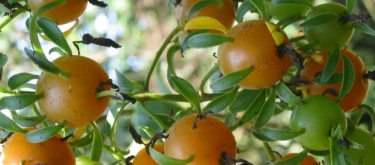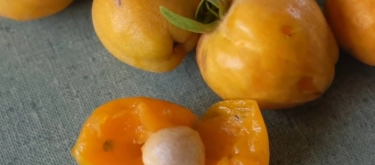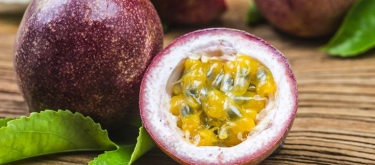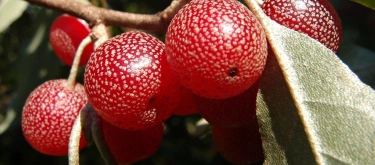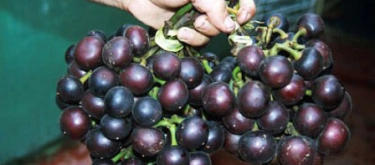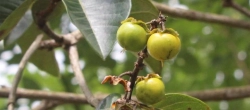Chompa: Taste Profile, Aroma, Benefits and Health Risks
Chompa is a lesser-known tropical fruit native to certain regions of South America and the Caribbean. Traditionally valued by indigenous communities for its unique flavor and potential health benefits, Chompa has recently garnered interest as an exotic culinary ingredient. Though scientific literature is limited, local traditions suggest that Chompa offers a distinctive sensory profile and nutritional benefits, making it a promising candidate for gourmet recipes and innovative culinary applications.
Chompa is a tropical fruit traditionally consumed in local diets and is naturally vegan, gluten-free, and low in common allergens. However, as with many exotic fruits, individuals with sensitivities to tropical produce or cross-reactive pollen may experience mild reactions. Always verify sourcing, as wild-harvested fruits can vary in quality and potential contaminants.
What does Chompa taste like?
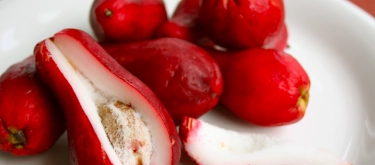
Complete Sensory Description
Taste
Chompa’s flavor is a fascinating interplay of tropical sweetness and gentle tang. The initial impression is one of vibrant, honeyed sweetness that gradually reveals a subtle tartness akin to a blend of passionfruit and guava. Beneath this primary sweetness, there are nuanced hints of resinous, almost floral notes, which lend the fruit a complex, layered taste. This multifaceted flavor profile makes Chompa both refreshing and intriguing on the palate.
Aroma
The aroma of Chompa is bright and exotic, characterized by a fresh tropical bouquet. Delicate notes of citrus and wild berries mingle with faint floral and herbal nuances, likely due to its rich volatile oil content. The scent is both inviting and uplifting, evoking images of lush rainforests and sun-drenched groves, enhancing the overall sensory experience.
Texture
Chompa’s flesh is tender, juicy, and slightly granular, offering a pleasing contrast between smooth pulp and tiny, edible seed fragments. The texture is reminiscent of a perfectly ripened tropical fruit, where the juiciness provides a burst of flavor, and a subtle fibrous quality gives it a satisfying mouthfeel. The skin is thin and delicate, contributing little resistance and allowing the internal flavors to shine.
Appearance
The fruit typically has an oval to slightly rounded shape, with skin that ranges from vibrant green when unripe to a warm, golden-yellow at full maturity. The exterior is smooth and may have a slight waxy sheen, while the interior reveals a luminous, creamy-yellow flesh interspersed with tiny, crunchy seeds. This striking visual contrast makes Chompa appealing both as a fresh fruit and as an ingredient in culinary presentations.
In-depth Flavor Analysis
The unique flavor of Chompa is the result of a complex biochemical matrix involving sugars, organic acids, and volatile aromatic compounds. The predominant sweetness is driven by high levels of fructose and sucrose, which develop as the fruit ripens, creating an initial burst of nectar-like flavor. This sweetness is finely balanced by organic acids—primarily malic acid—which impart a mild tartness that prevents cloying sweetness and enhances freshness.
A detailed molecular analysis reveals that volatile esters such as ethyl acetate and hexyl acetate contribute fruity and slightly floral nuances, while terpenes like limonene and linalool add citrusy and herbal dimensions. Trace phenolic compounds may introduce a subtle bitterness and a resinous quality, rounding out the flavor profile. Environmental factors, including soil composition, sunlight, and rainfall, further modulate these compounds, resulting in variability among different harvests. For example, fruits grown under intense sunlight in tropical climates often exhibit intensified sweetness and a richer aromatic profile, whereas those from slightly cooler or shaded regions may present a sharper, more pronounced acidity and delicate herbal notes.
Varieties and Culinary Applications
Varieties
Due to its localized cultivation, Chompa may exhibit regional variations:
- Tart Variant: Shows a higher acid profile and crisp, refreshing taste—ideal for salads or as a palate cleanser.
- Extra-Sweet Variant: Possesses deeper honeyed notes and a softer, almost custard-like texture, perfect for desserts and preserves.
Culinary Applications
- Fresh Consumption: Enjoy Chompa as a standalone snack or in fruit salads to savor its exotic sweetness and refreshing tang.
- Desserts & Baked Goods: Incorporate into cakes, tarts, sorbets, and jams; its natural flavor and aromatic complexity elevate sweet treats.
- Beverages: Blend into smoothies, juices, or tropical cocktails to infuse drinks with vibrant flavor and nutritional benefits.
- Savory Dishes: Experiment with Chompa in sauces or glazes for poultry, seafood, or pork, where its balanced acidity and sweetness can create innovative flavor contrasts.
- Culinary Fusion: Use as a component in chutneys or salsas, combining with herbs, citrus, or spices to craft unique condiments for modern fusion cuisine.
Selection and Storage
Selecting Quality Chompa
- Opt for fruits that yield gently under pressure near the stem, indicating optimal ripeness without being overly soft.
- Look for vibrant skin color (green transitioning to golden-yellow) free from blemishes or signs of decay.
- Ensure the fruit has a fresh, pleasant tropical aroma, indicative of peak ripeness.
Storage Recommendations
- Allow Chompa to ripen at room temperature, then refrigerate at 2–4°C (35–39°F) to extend freshness for up to one week.
- For longer storage, consider freezing the pulp in airtight containers for up to 2–3 months, preserving flavor and nutritional value.
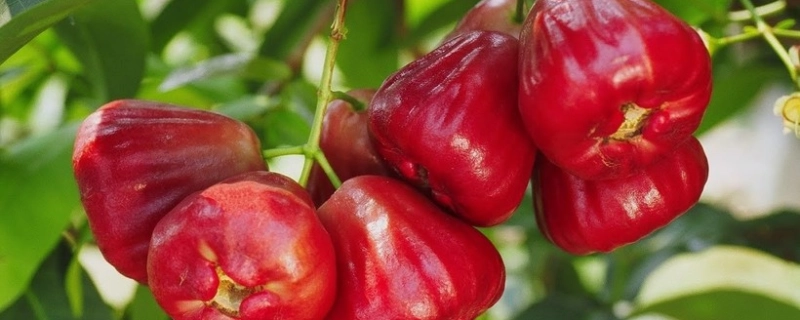
Nutritional Insights
- Vitamin C and Antioxidants:
Rich in vitamin C and antioxidants, Chompa supports immune function, collagen synthesis, and cellular protection against oxidative stress. - Dietary Fiber:
High fiber content aids digestion, promotes gut health, and helps maintain stable blood sugar levels. - Essential Minerals:
Provides potassium, magnesium, and trace minerals vital for cardiovascular health, nerve function, and metabolic balance. - Low-Calorie, Nutrient-Dense:
Delivers a wealth of nutrients with minimal calories, making it an excellent addition to balanced, health-conscious diets.
Expert Insights & Culinary Tips
- Maximizing Flavor:
To fully appreciate Chompa’s delicate balance of sweetness and tartness, allow the fruit to reach full ripeness; slight softness at the stem is key. - Complementary Pairings:
Enhance its natural tropical flavor by pairing with citrus, mint, basil, ginger, or coconut. It also pairs wonderfully with mild cheeses and light proteins. - Preparation Techniques:
For preserves or sauces, use gentle, low-heat simmering to retain aromatic compounds and prevent the loss of delicate flavors. - Serving Suggestions:
Serve fresh Chompa in fruit salads, or as a topping for yogurts and desserts, to highlight its unique taste and texture.
Interesting and Curious Facts
- Chompa has been traditionally used by indigenous communities not only as a food source but also in medicinal applications, believed to aid digestion and boost immunity.
- Due to its rarity in commercial markets, Chompa is often celebrated as a regional delicacy, symbolizing local agricultural heritage and biodiversity.
- Local legends and traditional knowledge have long extolled the benefits of Chompa, contributing to its status as an exotic, sought-after fruit in artisanal and gourmet circles.
Harm and Dietary Considerations
- Digestive Sensitivity:
Due to its high fiber and organic acid content, overconsumption may lead to mild digestive discomfort in sensitive individuals. - Allergenic Potential:
Although rare, some people may be sensitive to exotic tropical fruits; start with small portions if trying Chompa for the first time. - Contaminant Risks:
As with any wild-harvested fruit, ensure Chompa is sourced from reputable growers to avoid potential pesticide residues or environmental contaminants.
Religious Dietary Considerations
Chompa is universally acceptable across major religious dietary traditions:
- Islam: Permissible (Halal).
- Judaism: Permissible (Kosher, Parve).
- Hinduism & Buddhism: Widely permissible; often included in traditional offerings and local diets.
- Christianity & Other Religions: No known restrictions; widely enjoyed as a natural, exotic fruit.
Final Thoughts & Sensory Journey
Chompa, with its exquisite balance of tropical sweetness, gentle tartness, and nuanced aromatic complexity, offers a rare and delightful culinary experience. Its succulent, tender flesh and vibrant flavor profile not only captivate the senses but also provide significant nutritional benefits. Whether enjoyed fresh, blended into beverages, or transformed into jams and sauces, Chompa stands as an exceptional testament to the rich culinary heritage of tropical regions.
Resources
- McGee, H. (2004). On Food and Cooking: The Science and Lore of the Kitchen. Scribner.
- USDA FoodData Central (2023). Nutritional Profiles of Tropical Fruits.
- Ethnobotanical Studies on South American Tropical Fruits (various sources).
